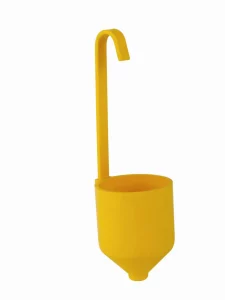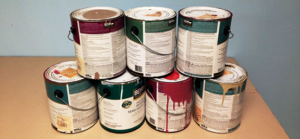Viscosity Cup-Ford Cup
 A cup brass/aluminium or PVC with a hole of a specific size in the bottom.
A cup brass/aluminium or PVC with a hole of a specific size in the bottom.
Use to ensure the same thickness/viscosity of a liquid is maintained .
.
Waste Disposal
Waste Disposal. 
On construction site the disposal of building waste including paint and hazardous liquids should be cover at your site induction toolbox talk.
At this time information and disposal stations facilities should be available.
On domestic projects checks should be made with the local authorities regarding facilities and regulations for commercial wastage.
Under no circumstances should paint products be disposed of into the nation water drainage system.
Part used paint containers should be filled with either sand or sawdust to consolidate the liquid and allow to dry be for disposal.
Dirty solvent (white spirit etc.) is classified as hazardous and should labelled according as this type of product can be reclaimed.
Tips:
Part tins of water based paints are available they could be offered to a local community organisation.
Dirty solvents. After washing out brushes the solvent can be reclaimed for future use by transferring into a larger container. Once the solids have settled to the bottom the solvent can be syphoned off and reused.
Wet and Dry
Carborundum abrasive paper which can be used either dry or wetted with water or thinner, (see Emery Cloth).
Wide width wallcoverings
Wallcovering that are wider than the normal 52cm wide wallpapers.
https://www.muraspec.com/uploads/files/October_2021_-_Muraspec_UK_Hanging_Instructions.pdf
Woodgrain Effect
Woodgrain Effect 
See: Specifications - Broken Colour Techniques and Special effects Tool Boxes and Equipment
Worker/Tradesperson
Worker/Tradesman.
See: https://www.citb.co.uk/documents/cdm%20regs/2015/cdm-2015-workers-interactive.pdf
Xylol/Xylene
Solvent – thinner used in special paints, mainly chlorinated/Acrylated rubbers and high performance paints.
Yellowing
A yellow tone hue as a result of age. Mainly occurs with white and very pastel shades of paints or varnishes.
White oil based finishes will yellow where there is a lack of natural light.